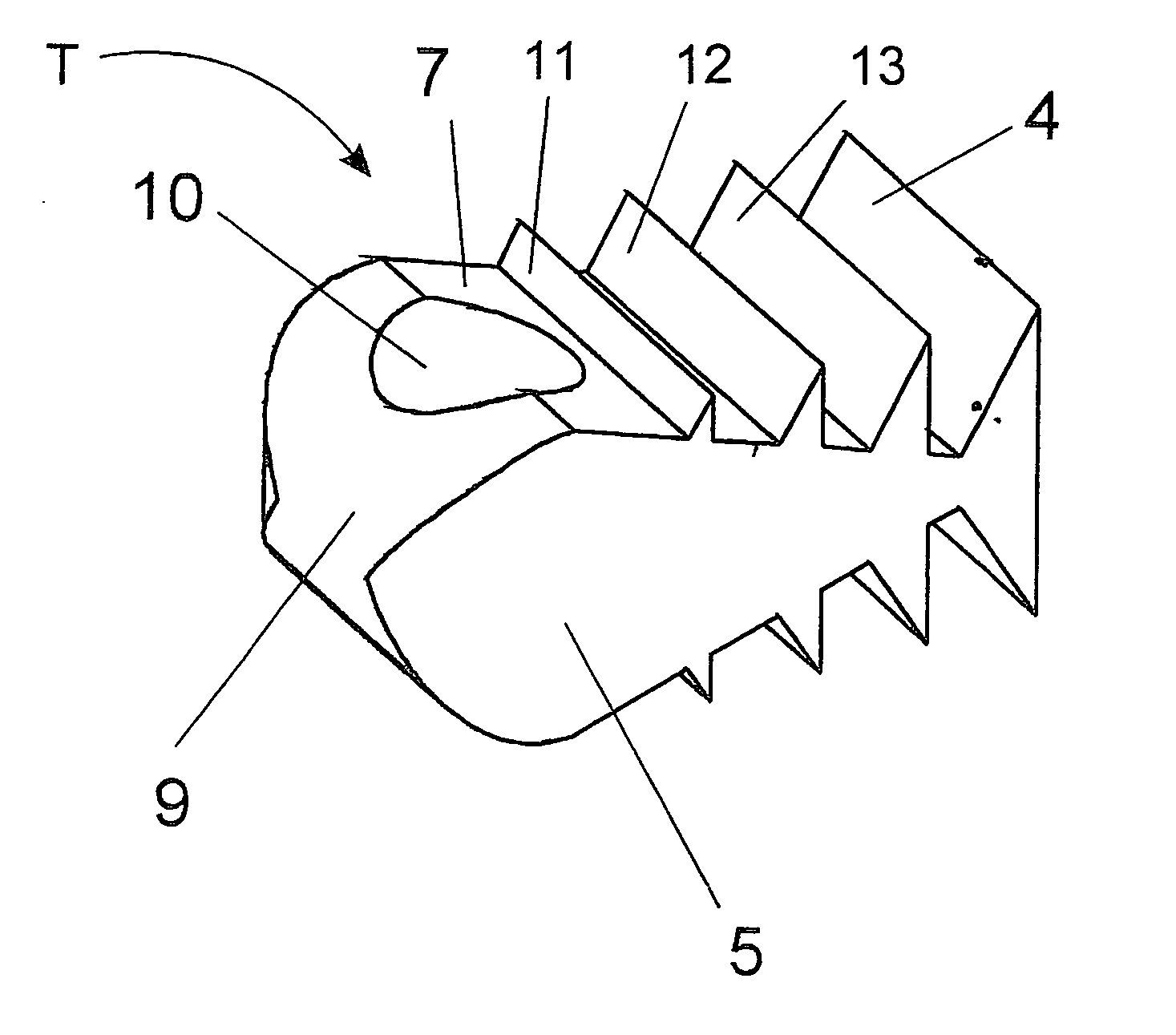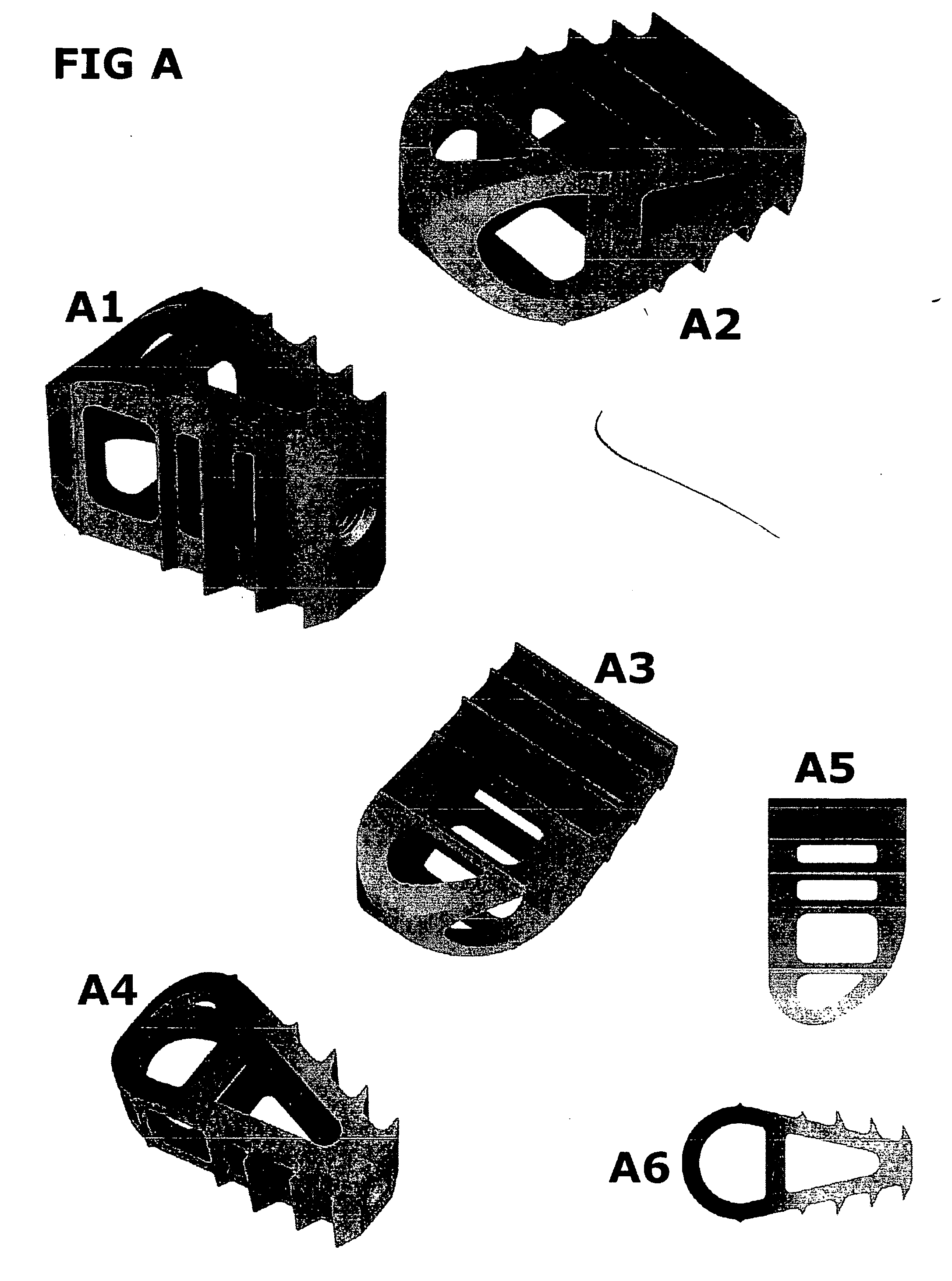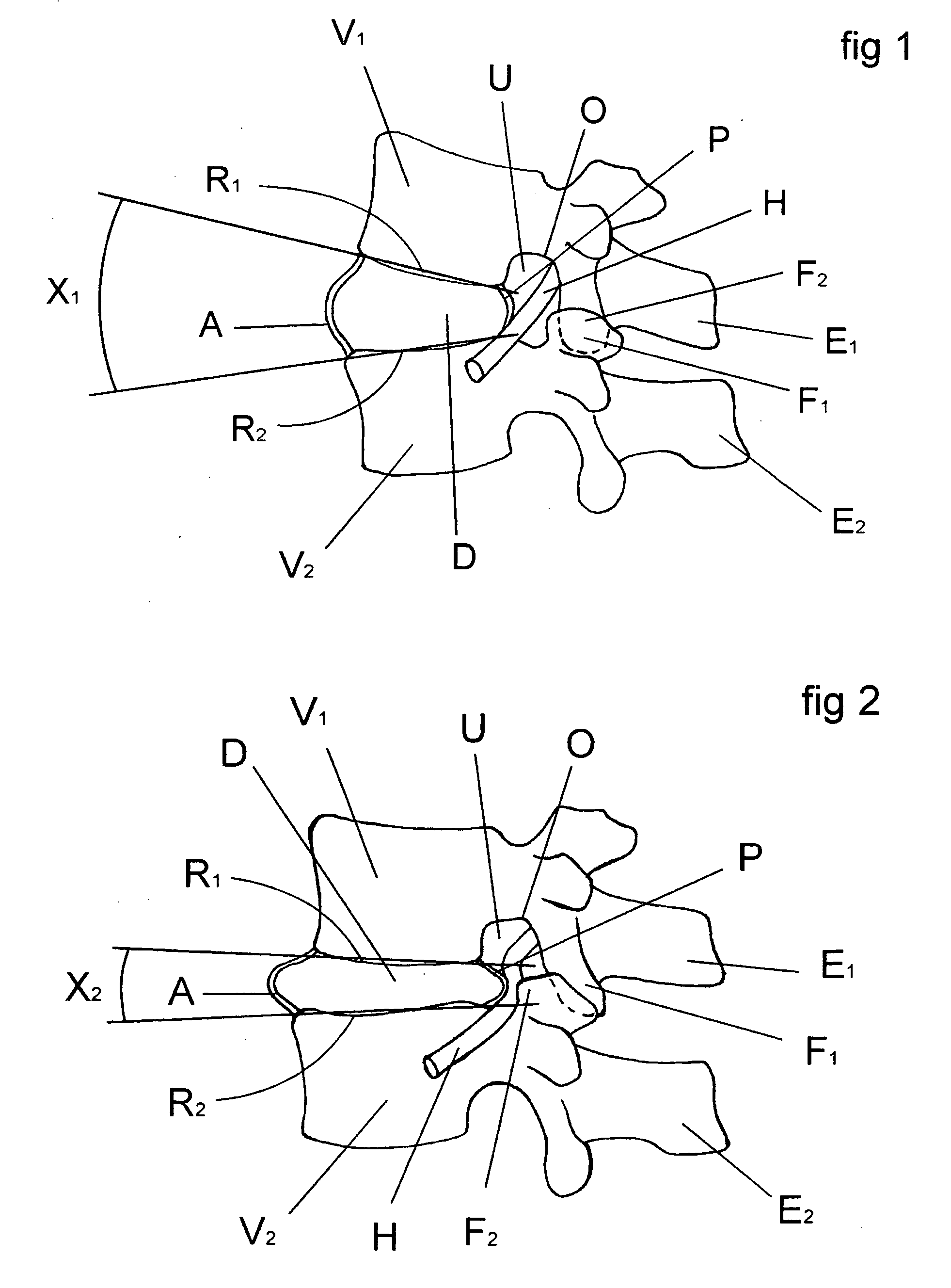Likewise, the need of stabilizing the
spinal curvature may result from an operation on said region, especially when
metal assemblies have been used without correcting the defect.
The sharp lordotic angle and elongation of the anterior column occurring in this procedure were assumed to be associated with serious vascular and neurological complications.
In this way, two osteotomies are performed and the mechanical stabilization difficulties of the region are increased, there being a high risk of displacement of the fragments for having caused
instability in two levels.
Furthermore, there is also the risk that only one of the osteotomies is fixed while the other one remains unfixed.
Moreover, said surgical technique is very aggressive there being a considerable
blood loss as a consequence of the fracture that has been made, the
vertebral bone is removed and the muscles fixed in that part of the
vertebra are detached.
If the
osteotomy were performed in two vertebrae of the same region, the shortening of the spine would be equal to the length of the base of both wedges, thus considerably increasing the morbidity of the proceeding and surgical risks as well.
The different techniques of vertebral osteotomies have shown technical inconvenient and complications derived from the surgical technique itself due to the bone resection and the necessary mobilization of the
trunk and lower extremities during operations.
None of them could establish a predetermined correction angle.
Full angular correction of the
lumbar spine in PWO was not always achieved, thus resulting in a decreased correction or monosegmental correction.
The reduction of the vertebral
mass increases the risk of
instability and infection.
Likewise, there is a considerable continuous
blood loss after the operation.
Their conclusion was “This structured review of the literature concerning three methods of
lumbar osteotomy for correction of thoracolumbar
kyphosis deformity showed that reports are limited and provide scant information on clinical data.
Although the available data from the current literature suggest that CWO causes less serious complications and has better results, these data are not suitable for
decision making with regard to which
surgical treatment is preferable.
Since the damaged disc material has been removed, something must be positioned within the
intervertebral space, otherwise the space may collapse resulting in damage to the nerves extending along the
spinal column.
By means of this technique, once fusion of vertebrae occurred, the material used to maintain the stability of the segment became superfluous.
Moreover, the
surgical procedures necessary to implant a rod or plate to stabilize the level during fusion were frequently lengthy and complicate.
Another problem that is not addressed by the above prior devices concerns maintaining or restoring the
normal anatomy of the fused
spinal segment.
With the prior devices, the need to restore this curvature is neglected.
However, this over-reaming of the posterior portion is generally not well accepted because of the removal of the
load bearing bone of the vertebrae, and because it is typically difficult to ream through the posterior portion of the lower
lumbar segment where the
lordosis is greater.
In most cases, with the use of implants of this type, no effort is made to restore the lordotic curvature, so that the cylindrical implant is likely to cause a kyphotic
deformity as the
vertebra settles around the implant.
This phenomenon can often lead to
revision surgeries because the spine becomes imbalanced.
By way of example, said implants show that they may be used to separate vertebrae in a limited degree and consequently the correction achieved by the current devices that are inserted between the vertebrae is minimal and said implants cannot be used for important deformities in the curvature of the
lumbar spine caused by the generalized
disease of the intervertebral discs.
It is obvious that these procedures are used to separate vertebrae but the curvature is not corrected in the usually necessary grades.
However, said separation of the vertebral bodies also separates the posterior edges of said vertebral bodies so that said implants cannot cause greater corrections of
lordosis since they do not allow a convergence of the posterior area of the vertebral bodies.
This aspect of the surgical technique related to the preservation of the articular facets is in detriment to obtain a surgical field broad enough.
This limitation has been noted in the literature about complications of the method.
But the slots disclosed by Bryan's does not preserve the bone end-plate to maintain the
structural integrity and discourage
subsidence; moreover such cage is being supported by soft bone within its critical area.
This method may not ensure a pre-determined
lordosis correction that may vary upon the surgeon artisan's skills.
There is another important inconvenience about the use of slots, and comprises the way of handling rachidian nerves.
Since no special technique is disclosed in this respect, we understand that the method involves great risk of damage to the rachidian nerve, considering the distance necessary to produce a slot and to
handle a
cutting instrument so close to the nerve.
It is not physically possible to obtain a lordotic angle correction above 8 degrees with Marion's insert and method, without dissecting the
facet joint capsules.
To conclude, Marino's insert cannot be used, it is not design and do not teach the way to obtain a lordotic angle correction above 8 degrees and do not have the same constructive aspects and features that Carrasco's cage has.
And mainly the content of the prior art discussion is about how difficult and rare is no obtain permanent lordotic angle corrections above 8 degrees, and how unpredictable a lordotic angle correction is before and after
surgery.
“By way of example, said implants show that they may be used to separate vertebrae in a limited degree and consequently the correction achieved by the current devices that are inserted between the vertebrae is minimal and said implants cannot be used for important deformities in the curvature of the
lumbar spine caused by the generalized
disease of the intervertebral discs.
In the same way, you do not achieve 300
miles per hour with a car just with a bigger motor engine.
Moreover, we have demonstrated with cited documents that such kind of surgeries [for corrections above 8 degrees] are major surgeries with high
death risk and undetermined results [not possible to pre-schedule the final curvature correction achieved].
Above 8 degrees, existing cages and methods will fail to put the posterior annular fibers under tension and could limit the degree of
facet realignment and neuroforaminal widening.
 Login to View More
Login to View More  Login to View More
Login to View More 


